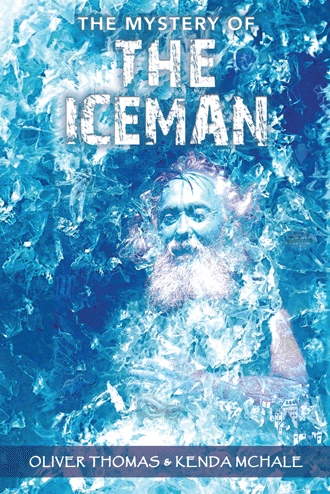The mystery of the Iceman begins on the Day of Atonement September 19, 1991. On the Hebrew calendar this is the 10th day of Tishri also called Yom Kippur. It is the most important day of the year for those of the Jewish faith. On Yom Kippur Jewish tradition requires people reflect on the story of Cain and Abel. Many Jews believe this was the day, several thousand years ago, that Abel made an atoning sacrifice to God and earned his favor. At the same time Cain gave an offering that disappointed God. Cain became so jealous of his brother he killed him and buried his body.
On the Day of Atonement during the course of the remembrance questions are asked as reflections. One of the questions the Rabbi asks is, “Where is your brother?” The very question God asked Cain. This question will lead us through a fascinating journey into the dawn of history.
September 19, 1991 was also a significant date in modern archeology. This was the day an astonishing discovery was made; a discovery that literally would change the world’s view of history! In the upper region of a melting Alpine glacier, the body of a man was found protruding from a frozen pond. Initially, it was thought to be the remains of a misfortunate hiker, but it turned out to be the oldest, fully preserved, human mummy ever found. After closer examination, the frozen corpse proved to be that of a man who lived more than 5,000 years ago. He was discovered by hikers exploring the Otz Valley of the Italian Alps near the border of Austria and soon after was nicknamed “Otzi the Iceman.”
Today, this body is kept in its own museum at Bolzano, Italy, in a specially designed refrigerated vault (South Tyrol Museum of Archaeology, 2011). The body is studied by scientists from around the world, and their new discoveries become headline news in scientific journals and on the internet. However, there is more to the Iceman than meets the eye, even more than the scientific eyes of X-rays, CT scans, and electron microscopes.
Advanced scientific equipment has opened a window into the past, unearthing a mystery worthy of a Sir Arthur Conan Doyle novel. With all we have learned about the Iceman, we have come to a point where we can evaluate and draw conclusions about some fundamental, yet unanswered, questions. With an emphasis on logic, this study will lead to an astounding conclusion. As a guiding principle, we will use Sherlock Holmes’s famous motto, “It’s elementary Watson, the simplest explanation is usually the correct one,” adding this caveat: in God’s economy nothing happens by accident.
This crucial fact must not be overlooked: The very existence of a human body approximately 5,300 years old and in a highly preserved condition is probably the result of supernatural intervention. This is not an exaggeration if we carefully weigh the evidence. To get some perspective on just how old the Iceman is, consider the following facts: The Great Pyramid of Egypt is the only remaining wonder of the famous "Seven Wonders of the Ancient World." Even though it is far older than the other six, in fact, it was extremely ancient when the others were being built. All of the other great structures have weathered, eroded, and crumbled into dust. The only reason the Pyramid still stands is because of its amazing design of solid-rock construction and sloped on all sides that defy gravity. A general consensus among archeologist places construction of the Great Pyramid at 2400 B.C. (give or take one hundred years). Carbon dating of the Iceman indicates he lived about 3300 B.C. (give or take one hundred years). Miraculous is the word we should use when we look at the feet of a man who walked the earth a thousand years before the Great Pyramid was built!
So how did this body remain intact for an astounding 5,300 years? There are two distinct reasons why this corpse is preserved so well. The first reason is because of the fact it was covered in ice shortly after death, suffering only minimal deterioration. Experts who have examined the body when it was thawed say it still looks fresh ("Death of the Iceman," 2002). Unlike other mummies with brittle dry skin and powdery bones that crumple when touched, this body is intact with flesh, bone, and muscles. The eyes, brain, and tongue still remain in the skull. The heart, liver, and lungs remain in his chest (Spindler, 1996).
This body was not just dehydrated or frozen; it actually was freeze-dried by extremely cold wind that removed most of the water from the body. According to an article in the Journal of Archaeological Science, Otzi is the most famous freeze-dried mummy and is an extraordinarily rare find; it states: “Among natural mummies, those produced through freeze-drying are by far the best as they unite the preservation of the anatomical and cellular structures to that of many biological molecules. Unfortunately, freeze-desiccated mummies are relatively rare…” (Rollo et al., 2007). To this I would like to add the fact Otzi is far far older than any other freeze dried mummy ever found. Ice mummies are found primarily in the Andes Mountains of South America and very few exceed a thousand years old.
Scientists attribute the excellent state of the body to the freeze-drying process (Ermini, 2008). The fact the water was removed saved the Iceman from the destruction caused when wet tissue freezes; normally, frozen cells rupture and deteriorate quickly. After the body was freeze-dried, it was encased in ice and hidden away for more than 50 centuries.
The second reason the body is so well preserved is the propitious location where the Iceman fell to his death. The Iceman collapsed into a small trench when he succumbed to wounds to be described later. It was in this trench the icy, cold, dry wind blasted away the moisture from his body.


